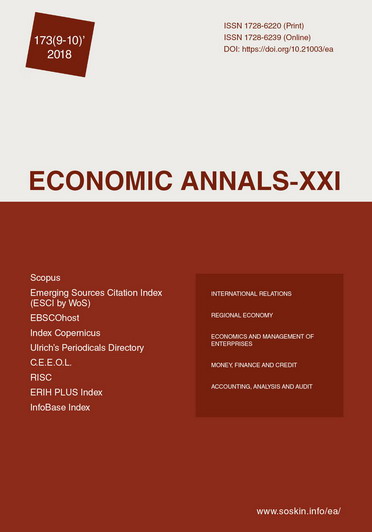Use of system dynamics tools in value-oriented approach in management
Use of system dynamics tools in value-oriented approach in management
Author(s): Marina Barabanova, Lyudmyla Lebedeva, Yuliya Rastova, Sergey UvarovSubject(s): Business Economy / Management
Published by: Institute of Society Transformation
Keywords: Value-Oriented Approach; Management; System Dynamics; Enterprise; System; System Dynamics Tools; Food Industry;
Summary/Abstract: The article is based upon assumption that in search for best sustainability any organization is leaning towards the value-oriented approach in management. This approach is grounded in the stakeholder theory, and addresses needs and expectations of consumers and other stakeholders on a long-term basis. When contributing to the best practices, companies produce shared values, able to act as a social power, to enter into the public consciousness, and to transform into behavioural norms. At the same time, these practices support best handling of resources and opportunities thus leading companies to success. The system dynamics model presents enterprises with potential strategies grounded in the target indicators, provides objective assessment of the target indicators sensitivity to changes at one or several parameters, sets and corrects their controllable limits, identifies specific causes of variation and, thus, insures necessary adjustments to the business management. Today, the system dynamics modelling is supported with mathematical software: Maple, MathCAD, Maxima, AnyLogic, Vensim, iThink (computer experiments software). In our research, we support the idea to develop methodology and improve practices of value-oriented approach in organization management based upon key tools of process efficiency, i.e. the system dynamics model. To build a system model and to run simulation analysis, we used AnyLogic software system. In this research, system dynamics model is tested against the case of supply chain management in the food industries, which include production facilities of high seasonal demand and products distribution network. To meet volatile demand, the company keeps certain stock of products in the chain of regional warehouses, and shipping the products as soon as new order is received. The market conditions and customer requirements are such that if the products cannot be shipped to the customer on time, then they buy these products from other sources. the system works steadily and does not require adjustments. Minor fluctuations in demand also do not break the system’s balance. The system works steadily and does not require adjustments. Minor fluctuations in demand also do not break the system’s balance. Simulation of seasonal demand increase (40% seasonal upsurge) proved the rate of new production shifts is almost twice higher than that of demand and two times smaller than the production cycle length. The experiment draws us to the following conclusions. The first response to increased demand is the shrink of stocks due to the delivery delays because of the duration of production cycle. A natural reaction of the company to such sharp reduction in stocks is striving for extreme intensification in reply to the demand upsurge. This causes a multiplicative effect. Since the stocks are initially shrinking, the only way to meet such shortfall is to raise the production rate above the shipments rate. The production shall exceed the shipments rate by sufficiently in volume and time to replenish the stocks in full. The launching peak value should lag behind the moment when the demand increases. The output adjustment reaches maximum at the moment when the stocks reach its minimum. The stocks start to grow only when the output rate exceeds the shipments rate which is always with delay. The research concludes on how to assess the response of targeted strategic indicators to the changes in one or more parameters of the system dynamics model. Our conclusions also help to determine controlled variation limits of the key performance indicators and causes of variation, and hint on how to implement rational adjustments as well. The application of system dynamics tools in performance forecasting to better address customers and other stakeholders’ expectations and needs would allow enterprises to introduce value-oriented approach in management on a long-term balanced basis and to strengthen their competitive advantages.
Journal: Економічний часопис - ХХІ
- Issue Year: 173/2018
- Issue No: 09+10
- Page Range: 32-37
- Page Count: 6
- Language: English

